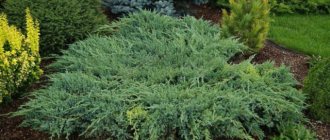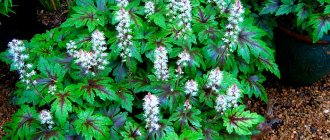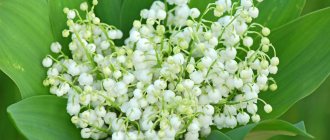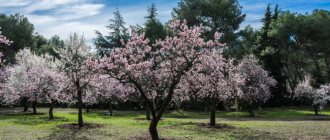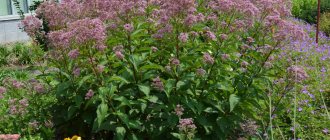Willow (willow) has long been considered a symbol of the arrival of spring. The beautiful branches of the tree that hang down to rivers and ponds have been described by many authors and philosophers. In the modern world, the willow tree has not lost its significance and is still loved by most gardeners. But in order to grow such a powerful tree in your yard or on your property, you need to work quite hard and learn some of the subtleties of caring for and planting a tree. We will tell you how to grow willow in this article.
Botanical description
Willow or from the Latin "Salix" belongs to the willow family, a tree of the genus Willow class - dicotyledons. Willow can be presented in various forms: in the form of a large or small tree, in the form of a bush, with hanging, or vice versa, with protruding branches and leaves. We will look at the botanical description of the classic willow.
Appearance
Most often, the plant grows up to 15 meters in length, and the trunk diameter is approximately 0.3 meters. There are also representatives that have a height of 40 meters, but this is more typical for “wild” willows. The lifespan of willow is approximately 50 years.
Willow leaves are typically dark green in color and the foliage is dense and curly. But some trees may also have sparse grayish foliage. It all depends on the age and conditions in which the willow grows. The leaf venation is reticulate.
The branches are thin and narrow, twig-like, flexible, but at the same time fragile. The buds that appear on these branches have a reddish tint. Willow blooms in early spring, often before the leaves appear.
Willow flowers are barely noticeable and small. After flowering, fruits begin to appear on the willow - small boxes inside which seeds ripen. Due to its small size, the seed can fly long distances.
Root system
The root system of willows is varied and depends on the type or variety of plant. For example, in goat willow the root system is poorly developed, and after 20-30 years of life it can hardly fulfill its intended role. The weeping willow has a powerful root system and grows until it finds a source of water.
Varieties of willow
As mentioned above, there are a wide variety of willow types. In certain areas of the world, this tree is incredibly common. However, little knows that in addition to the classic “weeping” form, it also comes in a shrubby form. A separate species, different from dwarf breeds. Landscape designers use different varieties of willow in a wide variety of projects. Alpine glades and slides have gained the greatest popularity. It is there that a low, spreading bush looks most natural. Among the bush types, there are also several of the most popular, most widespread species that lend themselves well to planting and require a minimum of care.
- Sverdlovsk twisting willow is a fairly tall garden planting; with good care, it grows to almost four meters in height. The branches have a classic twisting willow curve. Young shoots do not grow quickly, so the crown looks spherical. Also, the shape of the ball helps maintain the density of the trunks of young shoots. They are quite a bit “weeping”, so they don’t hang down much. The reddish-brown color of young shoots gives an attractive appearance. The Sverdlovsk sinuous type is very photophilous, loves moist soils, without water stagnation. It is little susceptible to pest attacks and tolerates replanting and pruning well. Its unpretentiousness to the soil makes it possible to plant Sverdlovsk willow together with other garden plantings, because it adapts to most known soils. Looks great in single plantings. Due to the height of the crown, it is rarely used independently as a green hedge; more often it complements wooden, brick, and stone fences.
- Lanata grows slowly, up to one and a half meters high. Russians recognize this shrub by its interesting, slightly fluffy ellispoid leaves of a silvery hue. Due to this type of foliage it looks very original. This shrub is most familiar to residents of the European parts of Russia. During flowering, it is covered with yellow flowers, quite dense, which then develop into whitish shoots, also a little fluffy. The plant is a light-loving plant, so it is better to plant it on the sunny side when it comes to planting together near a fence. It is also recommended to avoid tall, spreading trees in the neighborhood, which with their shadow can block the sunlight for the lanata. It prefers moist soil, therefore it belongs to the coastal type. Dry soil has a detrimental effect on shrubs. It is better to locate near reservoirs, or to organize the most balanced watering, taking into account the current level of soil moisture and the rate of moisture evaporation. In hedges it is planted as the second tier of the overall composition, although it can form an independent fence. The root soil is often mulched with fine crushed stone.
- Purple Na-Na grows as a shrub that is approximately two meters tall and approximately the same width. The green plant cube has a lush spherical crown, narrow, slightly long silver-green leaves. It grows quite actively, approximately 25 centimeters annually, so it reaches its maximum height more than five years after planting, depending on the size of the original seedling. The shoots have an elongated shape and a purple tint. This type is quite light-loving, although it goes well with taller garden plantings, which can shade a little. The haircut is most often spherical in shape; it is easiest to give it to lush young shoots. The variety is very frost-resistant and also tolerates hot summer periods. However, in winter, at very low temperatures, it is better to cover the bush with burlap, and in summer it is better to water it in a balanced manner, a little more frequently. It is important to avoid overwatering the soil; the purple variety does not tolerate stagnation of water in the soil, and the roots begin to rot quickly.
- Blueberry willow is low-growing , less than a meter tall. Rare shrubs reach a three-meter mark, but this is a big exception. It got its name from its foliage, which closely resembles the foliage of a blueberry bush. This type has bare brownish shoots that grow for years without falling off. The leaves also have a slightly elongated elliptical shape with a blunt end and a slightly rounded, flattened base. Due to the thin light foliage of a grayish tint and bright shoots, it looks very decorative and is often used by landscape designers in the formation of decorative plantings. It can withstand even the harshest winters, but it is better to protect it from severe frosts. In areas it looks great alone, also in a general group of hedges.
- Spherical willow is the golden mean between a shrub and a dwarf tree. It has long fifteen-centimeter leaves, more than three centimeters wide. Feels great in medium-moist soil and responds well to additional soil feeding. Perhaps due to its dwarf size, with proper care, the broad-shaped variety quickly stretches upward, growing almost 35 centimeters annually. The light-loving mini-tree does not like the sun's rays obscured by other plants or fences, so it is most often planted in one line along garden paths and the banks of reservoirs. Isolated trees grow wider, while trees combined with other plants tend to grow higher. It is recommended to plant seedlings at a distance of more than 70 centimeters so that during the growth process there are no problems associated with insufficient sunlight. The maximum period of active growth is usually no more than seventy years. This period is characterized by maximum strengthening of the rhizome. To fertilize the soil, fertilize a slightly acidic, slightly alkaline environment.
The bush flowering willow is a wonderful example of an unusual variety of a well-loved, well-known plant. After birch, willow is the second most important tree, symbolizing Russian nature. Shrubs are in no way inferior to their larger counterparts, forming beautiful green complexes and entire living plantings. They can be used to decorate garden space, to zone, separating garden areas, and small patios. The soil requirements are minimal, so it is important to provide a good watering system, because other than this the shrub is not particularly demanding.
Types and varieties
Willows of different varieties and types can look completely different. In order to decide what kind of willow you want to see outside your window, we recommend that you familiarize yourself with its most popular varieties:
- Weeping willow or Babylonian (Salix babylonica). It is considered one of the most popular and characteristic varieties of willow. The plant is considered ornamental and grows quickly. Weeping willow can easily take root and grow even in unfavorable conditions and in any soil. Most often, willow is planted near ponds or on lawns.
- Creeping willow (Salix repens) is a low shrub whose height reaches approximately 1 meter. In nature, this willow grows on poor soils, most often sandy, so it is considered an undemanding species.
- Brittle willow (Salix fragilis) is a twisted tree with a dense and green crown. Reaches 15 meters in length. This willow blooms only in May. The advantage of brittle willow is that it takes root and grows quickly.
Rosemary-leaved, or Siberian, willow
The culture is low, spreading, with flexible shoots of purple or red color. It grows very slowly. Tolerates strong winds and cold well. Often used for planting among rocky hills.
The crown of the Siberian willow is spreading, the leaves are straight, flat, narrowed at both ends, and have a silky down. The leaf blade is greenish above and silvery below. Stipules are narrow-lanceolate, rapidly falling, often absent. It blooms in May with earrings with a pronounced aroma. The plant is low, about a meter in height, with a crown diameter of 4 meters.
For each variety, a specific planting site should be selected, although almost all of them prefer soil with a high level of humidity. Willow is a plant that looks harmonious on the shores of water bodies. Because of this feature, the plant is most often used for planting in areas with artificial reservoirs. Shrubs are often grown in the form of a trunk.
Planting, care and propagation
Once it has been decided which type or variety of willow is suitable in each specific case, it is necessary to study the question of how to plant and care for willow.
Reproduction
Willow reproduces in two ways:
- Seeds;
- By cuttings.
The first method of reproduction is rarely used and is widespread only in wild conditions. The fact is that a willow seed only lives for 1 week and it is quite difficult to find one suitable for planting.
The second method - cuttings - will definitely lead to results. You need to harvest cuttings between seasons, best in November or March. The shoot must already be sufficiently formed (it must be at least 2 years old). The required cutting length is approximately 25 cm.
It is best to plant the cutting first in a greenhouse or in a home pot, wait until the root gets stronger and takes root. In such conditions, the willow must be kept for a year and then planted in open ground. Willow should be planted in the spring, after all the snow has melted.
The seedling can be purchased ready for planting when it has already sprouted. Many people do this because it saves them unnecessary hassle.
Landing
The first thing you need to pay attention to when planting willow is the soil. Almost all varieties of willow do not like dry soil. If the gardener believes that the willow will not take root under the existing conditions, then humus or compost can be added to the soil.
A small hole is dug in the chosen location (it all depends on the type of willow), the earth is loosened and fertilized if necessary. The planted tree must be watered abundantly. Willow grows quickly.
Replanting a willow is not difficult, but if it has a weak root system, then it is better not to do this.
Care
The care that willow needs depends entirely on its variety. But, usually it comes down to three components:
- Watering;
- Fertilizer;
- Trimming.
List of types of care
| Procedure | Detailed description |
| Watering | Moist soil is the key to rapid growth of willow. This is especially worth remembering during dry summers. Most gardeners recommend watering the willow with buckets, or even better, throwing a hose under the willow for a while. In winter, in cold regions, there is usually enough moisture for willow. But, if the winter is dry, then it is better to water the plant during this period. |
| Fertilizer | You can feed the willow with fertilizers as desired. If you see that the willow is not growing or the leaves are quickly withering, then you can fertilize the soil. If everything is fine with willow, then it is better not to use any additional means. |
| Trimming | It is possible to prune some varieties of willows only in the first years of its growth. A willow 15 meters high is quite difficult to prune. If there is such an opportunity, then it is better to do this in spring or early autumn, while it is not yet cold. Willow responds well to pruning. |
Varieties of decorative willow
Bush willow is unpretentious, responds well with a good, solid crown and strong column to timely watering and fertilizing. You can often find trees and shrubs growing freely, mainly along river banks. Such plants take root on their own, like wild plants, but it is the muddy banks, a little sandy, a little clayey, that are ideal for the most productive, rapid growth of roots. Such trees take root well, grow for a long time, have an excellent crown and rich green leaves.
Willows are one of the most common plants in Russia, located mainly in the middle part, as they do not like heat. They get along well with other trees, so they can often be found in wooded areas together with other plants. They germinate ideally in damp places; dry slopes, swampy, too wet soils are perceived rather poorly. They are great for the garden because they also get along well with other plants and require a little attention. Accustomed to growing on their own, seedlings most often take root in ordinary garden soil, which is very important, because young trees are quite expensive.
This plant is one of the most ancient, found almost in the Cretaceous period. At the beginning of our century, there were already many varieties that exist in the modern era. Accordingly, it can be assumed that some species found today are not 100% selected. Twig-like, white, and ash-colored willows were already common back then.
In total there are about three hundred and fifty species, most of them located in the northern regions. It is the coolness, moisture, and shade of northern latitudes that allow plants to germinate most comfortably. There are varieties that grow in the humid hot tropics. More than sixty species live in North America. Most reach the size of a full tree. The average sizes, the most popular, reach fifteen meters, the smaller part - up to forty meters. For northern latitudes, the most typical varieties are blunt-leaved, reticulate, and polar willow.
Mountainous areas are best known for small sized plants. Therefore, the most popular there are low-growing varieties, such as grassy willow, reaching almost to the height of the mountains, at which snow drifts already begin. That is why the plants there take on a more bushy form, spreading along the ground, reaching upwards in size of only a few centimeters.
Breeders breed a large number of interspecific hybrids. These include willow, shelyuga, willow, willow, bush types of vines and willow, tala and willow. They mainly grow in the European part of Russia, the Central Asian expanses, and Siberia. The climate of these regions is perfect for breeding or self-sprouting. They propagate by cuttings, sometimes even stakes, and produce excellent branches of adventitious roots. You can propagate by seeds, but this is a more risky option, because if they do not sprout within a few days, then it will not be possible to germinate the planting in this way.
Diseases and pests
Willow, like any other plant, is susceptible to attack by pests and various pathogenic bacteria. The most common willow diseases include:
- willow scab. A fungal disease that attacks leaves. If the disease is present, the leaves and young shoots immediately begin to turn black;
- leaf spotting. It is divided into black, brown and brown spotting. When the disease occurs, spots of a characteristic color appear on the leaves;
- powdery mildew. This disease is common not only among willows, but also among other plants. Signs are the appearance of a white coating on the leaves and stems. The causative agent of this disease is also a fungus. Most often it can be found on willow in the summer. It is incredibly difficult to cure an advanced form of the disease, so it is better not to let it get to this point;
- necrosis of the cortex. One of the most terrible diseases. Most often, young trees are susceptible to it. In 95% of cases, the willow does not respond to treatment and dies. Only an unhealthy plant can develop necrosis, which is why it is so important to monitor the health of the willow from the very planting;
- crown gall. Tree's protective response to fungal diseases. It appears as a huge growth on the bark of a tree and resembles an abscess. If you notice only a few formations on a tree, then this is not a big deal and you can quickly get rid of them. The tree trunk should not be allowed to be absorbed by such growths;
- white heart-shaped rot of trunks. This disease is almost impossible to diagnose on time, because the outbreak is located in the very center of the trunk. A characteristic sign of the disease is rotten areas of the hollow, which become noticeable too late and the tree can no longer be saved.
Pests such as spider mites, willow leaf beetles, common willow aphids and others also haunt the tree from time to time. How to deal with diseases and pests?
The best defense is to eliminate the danger early. To prevent the willow from being attacked by pests or getting sick, it is recommended to systematically carry out the following procedures:
- Inspect the plant for harmful insects and rodents. If necessary, harass them;
- Inspect the willow for yellow leaves or mold. Diseased leaves should be removed immediately and the source of infection should be found;
- Twice a year, willow should be treated with a special 3% solution of Bordeaux mixture or copper sulfate. This will help not only save the tree, but also protect it from all problems.
Planting a willow hedge
Willow is an unpretentious plant. It will grow in almost any type of soil, although light to medium loams are best. The root system normally tolerates the presence of groundwater. Fertilizing the soil is not necessary, although bush species prefer organic feeding.
- For shrub seedlings, dig a square hole with sides of 50 centimeters; the larger the seedling, the wider the hole should be. The average depth is up to 50 centimeters. These are the optimal sizes so that you don’t have to lay too much, press the roots, if they are in their pure form. The presence of a soil lump will complicate planting, because the hole will need to be dug much larger, forty centimeters larger than the lump. A soil mixture consisting of a mixture of soil, peat, and rotted manure is laid down. In heavy soils, sand is added to improve water drainage. Nitrogen-containing mineral fertilizers are perfect for willows. The resulting mixture is stirred, and only then proceed to planting. Small seedlings must be planted very carefully, avoiding damage to the roots. Small shrubs have a poorly developed root system, so you should treat it with the utmost care.
- To organize a hedge, a whole trench is dug. It is a bit like organizing a strip foundation; initially it seems that there is no point in tearing it out. Although in fact it is much more convenient to plant in one large trench. They mark the territory, draw a straight line on which the fence will stand. The width is marked and a trench is dug according to the markings. It is necessary to fill it with all the necessary fertilizers, sand, and manure. Plants are planted at different distances, depending on the variety; bush willows are most often at 60 centimeters, sprinkled with earth for stability. After all the main trunks are vertical and in place, the hole is finally covered with earth.
- Planting work is best carried out from April to October, but especially hot days should be avoided, because the roots and earthen ball may dry out during preparatory work. If the roots are exposed, there are stricter planting limits. It is better to do this in early spring, before the buds bloom, or in the fall, in September, when the leaves begin to fall. When planting in autumn, the leaves are removed from the seedlings so that the willow does not waste excess juices, releasing all its vitality exclusively to the roots. It is better not to plant bush willow with the onset of winter, because it does not respond well to frost, and the seedlings may die.
Meaning and Application
Willow has always been of great importance to people and has found its use in many areas of life. Since ancient times, this tree has been considered a symbol of health and longevity. Some peoples symbolized the willow in reverse with sorrow and tears, but these were in the minority.
Areas of application for willow:
- Use in folk medicine. Tea is made from willow, which helps with fever, headaches and rheumatism. This tea is consumed even when problems with the gastrointestinal tract are identified.
- Baskets are made from willow twigs, wicker patterns and many other decorative things are created.
- Willow wood is often used as a building material or even fuel.
- It is used to strengthen river banks, protect slopes from landslides and the like.
- Some gardeners plant willow in non-fertile soil and claim that after the willow, more fastidious plants take root well around it.
Use in landscape design
In landscape design, not only decorative and dwarf species of willow are used, but also large trees.
Large willows are used for planting near ponds and rivers, which gives the place a more mysterious look. Small shrubs are planted singly or used in large compositions. Thanks to their pickiness, willows have become loved by a large number of landscape designers and gardeners.
Goat willow (also popularly known as willow)
From the name you can guess that the tree is often eaten by goats. A significant difference from other varieties is the preference for dry places, however, in the absence of such, it can also be located in wet areas.
Goat willow reaches a height of 13 m, the leaves have a distinctive oval shape.

